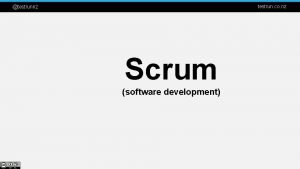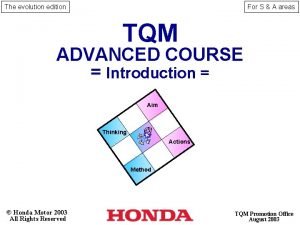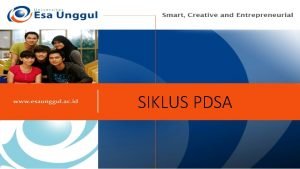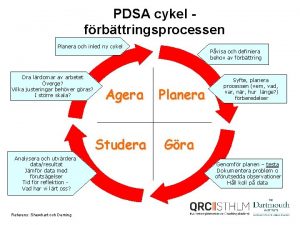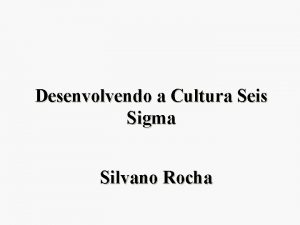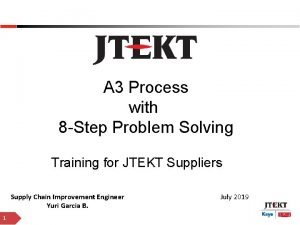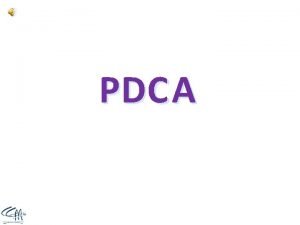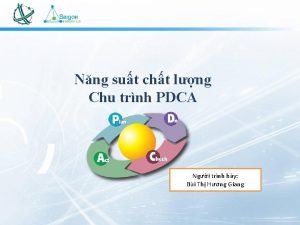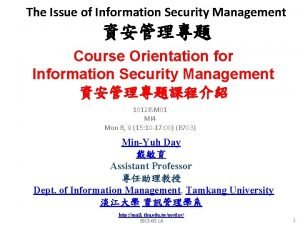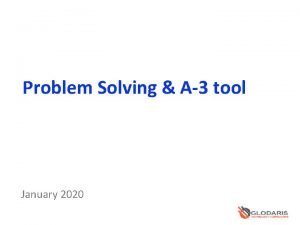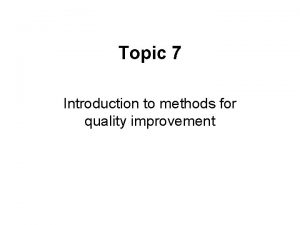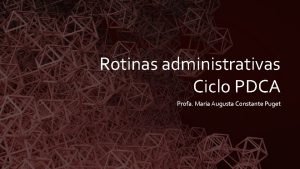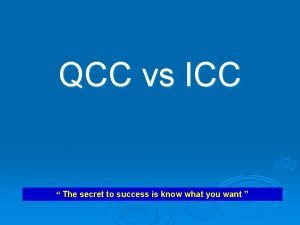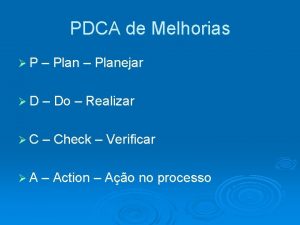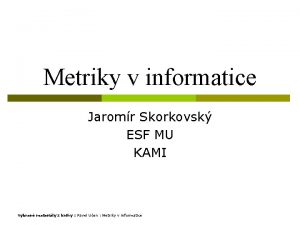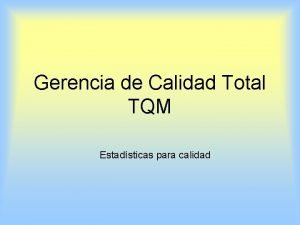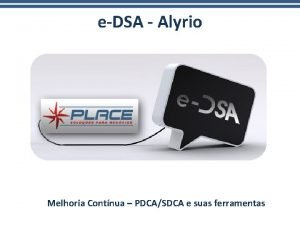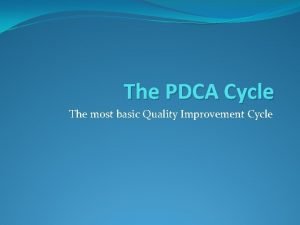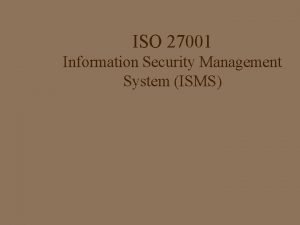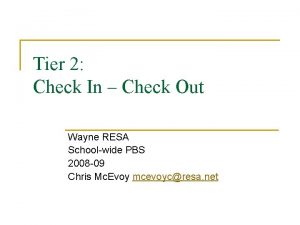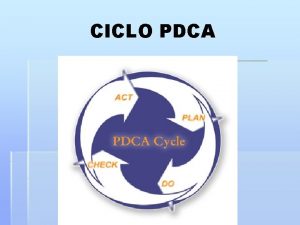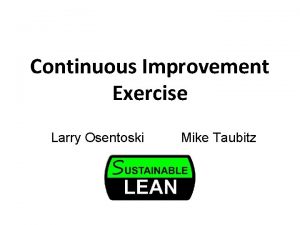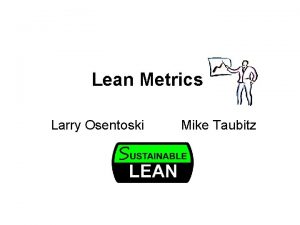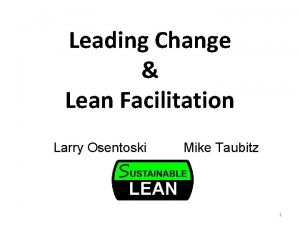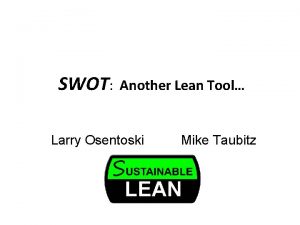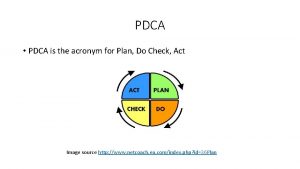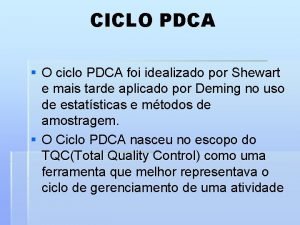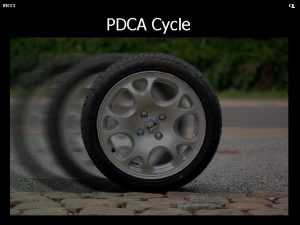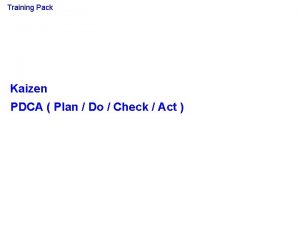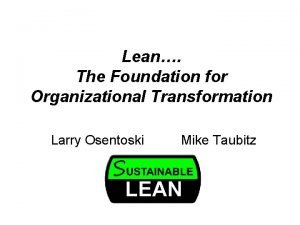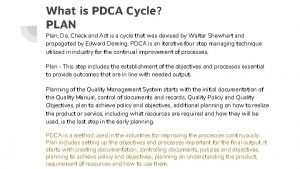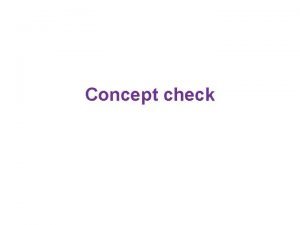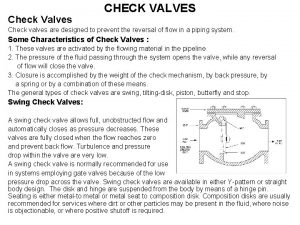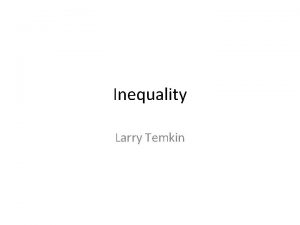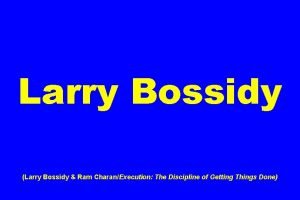PDCA Plan Do Check Act Larry Osentoski Mike
























- Slides: 24

PDCA Plan – Do – Check – Act Larry Osentoski Mike Taubitz 1

Deming • Most problems are a result of the system • Continual improvement: – Improve processes and systems – Plan-Do-Check-Act PDCA 2

Deming’s 14 Points 1. Create constancy of purpose towards improvement 2. Adopt the new philosophy 3. Cease dependence on inspection 4. Move towards a single supplier for any one item 5. Improve constantly and forever 6. Institute training on the job 7. Institute leadership 3

Deming’s 14 Points 8. Drive out fear 9. Eliminate organizational silos 10. Eliminate slogans 11. Eliminate management by objectives 12. Remove barriers to pride of workmanship 13. Institute education and self-improvement 14. The transformation is everyone's job 4

Continual Improvement ized d r a d Stan rk Wo Time 5 5

6

7

Plan a Meeting • Plan – Set agenda; determine attendees, purpose, etc… • Do – Conduct meeting • Check – Running short on time • Act / Adjust – Team decides to meet offline and discuss at next meeting 8

Making Presentation • Plan – Develop presentation • Do – Present material • Check – Time running short due to questions / discussions • Act / Adjust – Advise audience of time constraint; hit high points and reserve questions until end… 9

How do you use PDCA at work? 10

The Iceberg of Hidden Waste Finger pointing Stress Wasted Frustration time Errors & Rework Excess Materials Inventory Over-production Wasted Space Missed Deadlines Clutter Poor Housekeeping Correction Waiting $$$$$$ Movement Motion Procedure / Process $$$$$$ 11

Why Waste Elimination matters • Let’s assume we have a three shift operation with 11 workers on each shift • Each worker produces 200 parts • The combination of lean and safe thinking identifies that workers lose one second and exert extra effort to reach for a tool each cycle • During 5 S, we rehang the tool for quicker, easier access Salary: x$10/hr. = $4580 1 X X X second to reach for the tool 200 = 200 sec = 3. 33 min wasted / worker 11 = 36. 66 min wasted / shift 3 = 110 min / shift x$20/hr. = $9160 x$25/hr. = $11, 450 x$30/hr. = $13, 740 X 250 days = 27, 500 min wasted / year / 60 = 458 hours /8 = 57 days or ~ 2 month wasted each year because of 1 second of waste…. . per DAY per YEAR 12

Individual & Partner Exercise • Think about how you use PDCA in your professional life – Can it help reduce waste in your job? • Partner up with someone near you – Use PDCA reference • Share thoughts 1. 2. 3. 4. Correction Over production Motion Material movement 5. Waiting 6. Inventory 7. Process 13

14

Using the “C” before PDCA in Your New Work Assignment • New job in the last year? • Want to add value as new teammate or leader, but not sure how?

The “C” is Respect for People • Often leaders enter a new role and want to show immediate value. • CHECK current state before implementing any changes to an existing process! – Could be team use of Value Stream Mapping, Affinity Diagrams or other lean tools. • Then, and only then, PLAN using input from your team to add value. • Asking someone’s opinion/input is a sign of respect and strength on your part, not weakness.

“THE LEAN STARTUP” • Eric Ries, 2011 • Part One - Vision 1. 2. 3. 4. Start Define Learn Experiment 17

“THE LEAN STARTUP” • Part Two – Steer 1. 2. 3. 4. Leap Test Measure Pivot (or Persevere) Do the 4 steps in each of these three parts sound familiar to another 4 step process? ? • Part Three – Accelerate 1. 2. 3. 4. Batch Grow Adapt Innovate 18

Exercise • Using PDCA and critical thinking, which is the best way to hang toilet paper? – Under or – Over? • Take a few minutes and list “why” for your choice 19

20

Critical Thinking 21

22

23

24
 Logistieke doelstellingen voorbeelden
Logistieke doelstellingen voorbeelden Plan do check act
Plan do check act Pdca sa
Pdca sa Manfaat pdsa
Manfaat pdsa Pdsa-cykeln
Pdsa-cykeln Reddingsborden
Reddingsborden Dmaic x pdca
Dmaic x pdca 8 step problem solving training
8 step problem solving training Capdca
Capdca Premier bet mali
Premier bet mali Iso 27001 pdca
Iso 27001 pdca 8 step problem solving
8 step problem solving Pdca itil
Pdca itil Focus pdca
Focus pdca O ciclo pdca
O ciclo pdca Pdca model
Pdca model Pdca model
Pdca model Ciclo pdca fluxograma
Ciclo pdca fluxograma Pdca příklad
Pdca příklad Ciclo pdca
Ciclo pdca Dto diagnostico do trabalho operacional
Dto diagnostico do trabalho operacional Pdca doc
Pdca doc Cia+
Cia+ Act 1 act 2 act 3
Act 1 act 2 act 3 Behavior check in check out sheet
Behavior check in check out sheet

